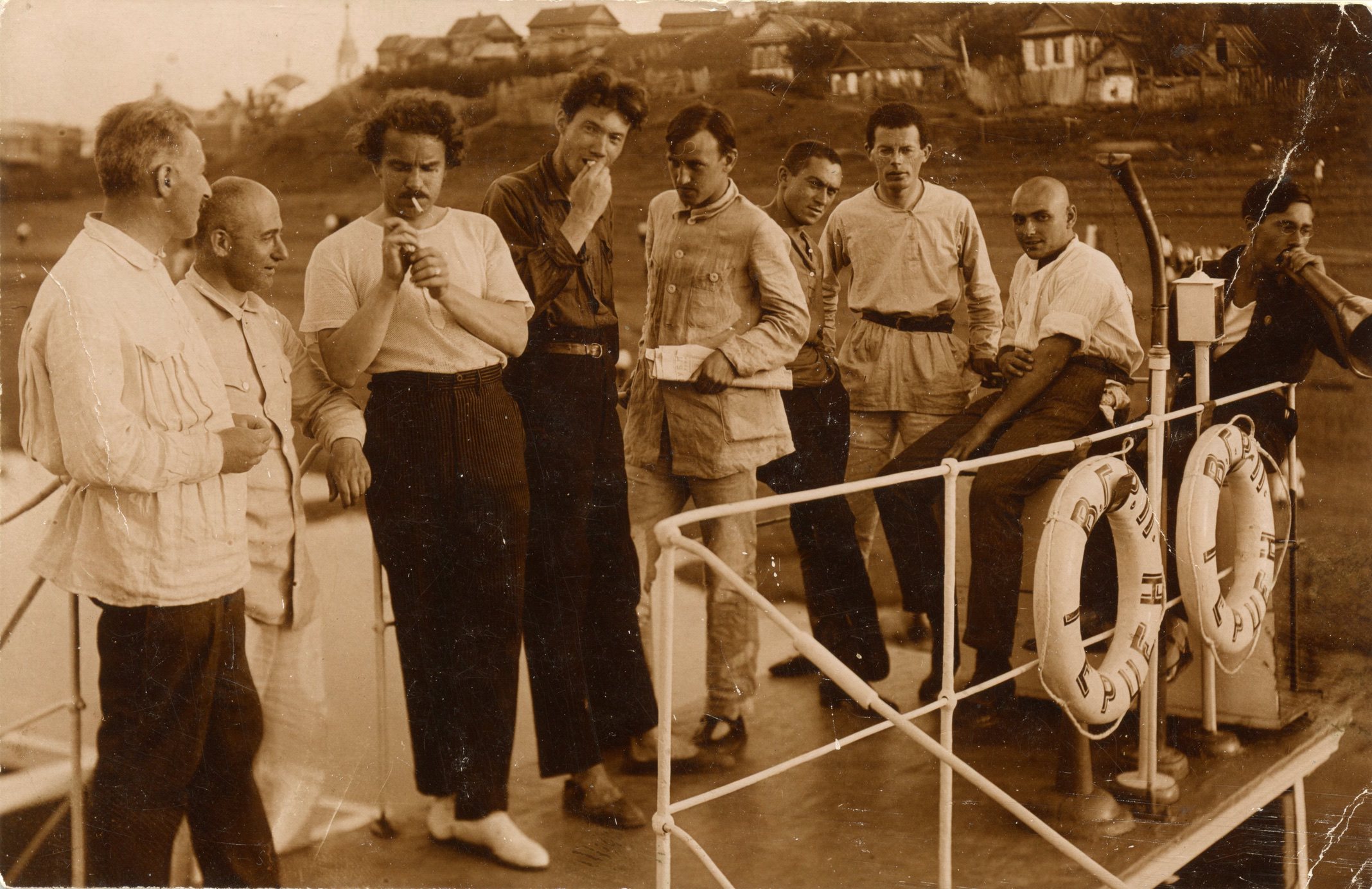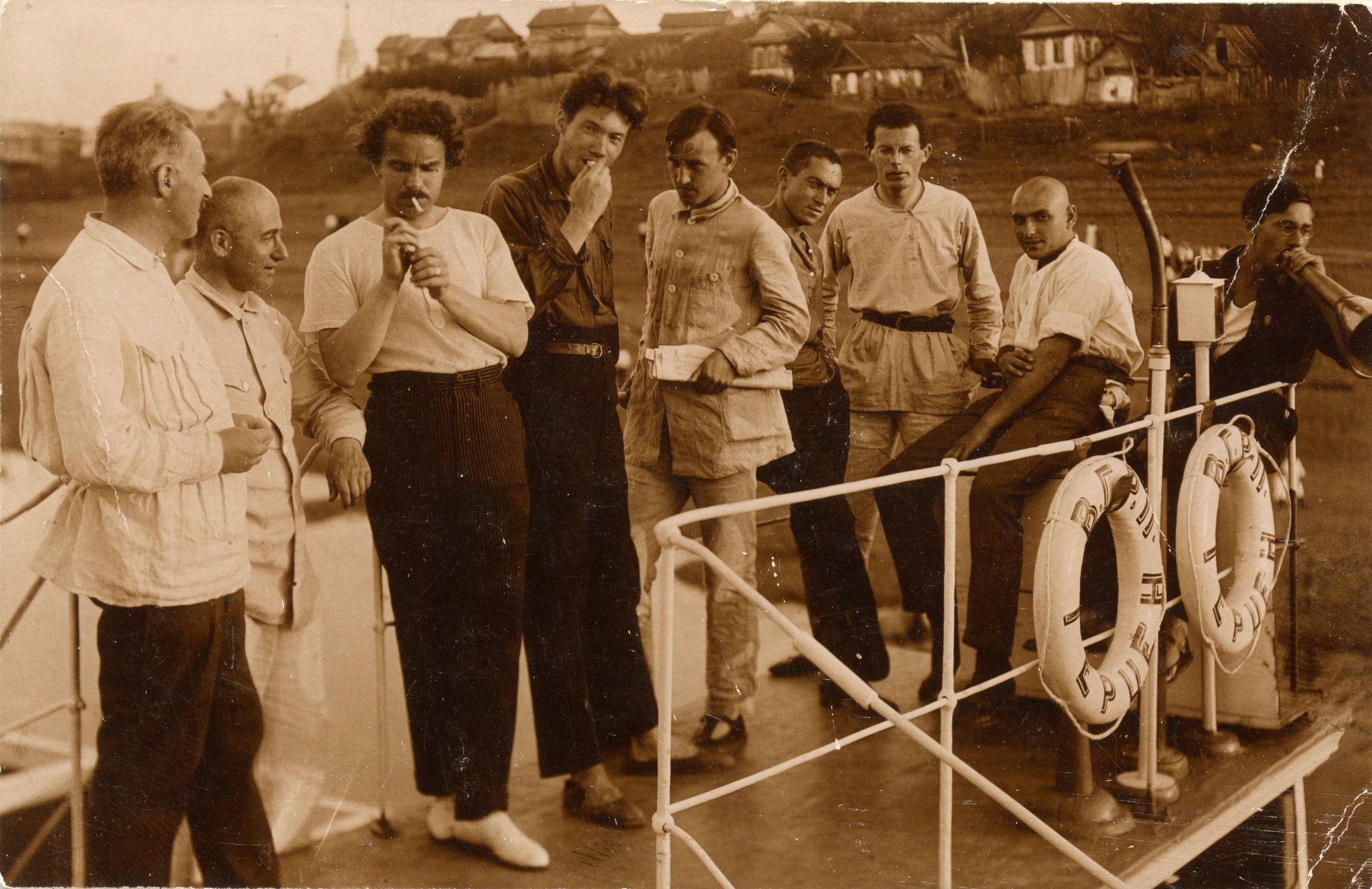Photography can act not only as an occasion for the creation of a work of art, but also as a record of key stages in the artistic process. As decades ago, in contemporary digital art this function assigned to photography continues to play an important role. After all, it is through photographic images and videos that the viewer is able to get behind the scenes of the creative scene to see the unobvious origins of the artistic project.
One example of this kind of photography is the portrait of the "Gudok" team (members of the editorial board of the newspaper "Gudok") made in 1925 on the circulation steamship Herzen. By the way, the steamship was one of those that took part in the campaign to get the public to buy government bonds. At first glance, this photograph is not much different from the many common group portraits that travelers still take every day. In addition, this photograph is static and does not capture the action usually associated with the act of creation. Can it be considered related to the field of artistic creation?

At the same time, this image is of direct relevance to understanding the way in which the well-known artistic project was created. After all, in this photograph we see Ilya Ilf (third from the right, wearing a pince-nez) among the Gudkovites. The writer was photographed at a time when he himself was a participant in the event, which became the prototype for one of the episodes of the famous novel "The Twelve Chairs". Thus, this photographic portrait tells about what was the creative method of I. Ilf and E. Petrov. Petrov, allows us to draw parallels between the final literary work and the reality of the Soviet everyday life, ensures the preservation of visual memories of the circumstances of the artistic process that played an important role in the history of national literature. And, therefore, this image teaches us to cherish not only the works of art themselves, but also the legacy of the sources that tell of artistic practice.
Artem Loginov, for "History of One Photo"





